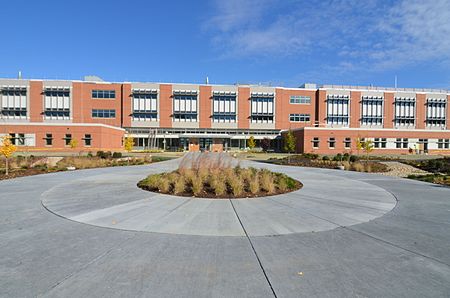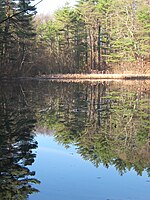Concord-Carlisle High School
1852 establishments in MassachusettsBuildings and structures in Concord, MassachusettsHigh schools in Middlesex County, MassachusettsPublic high schools in Massachusetts

Concord-Carlisle High School (CCHS) is a public high school located in Concord, Massachusetts, United States. It is 17 miles (27 km) northwest of Boston. The school serves grades 9–12, and as part of the Concord-Carlisle Regional School District, has students from both Concord and Carlisle, Massachusetts. The school also has a notable portion of minority students from Boston (particularly Dorchester, Mattapan, and Roxbury) enrolled as part of the METCO program.
Excerpt from the Wikipedia article Concord-Carlisle High School (License: CC BY-SA 3.0, Authors, Images).Concord-Carlisle High School
Walden Street,
Geographical coordinates (GPS) Address Phone number Website External links Nearby Places Show on map
Geographical coordinates (GPS)
| Latitude | Longitude |
|---|---|
| N 42.448413888889 ° | E -71.347447222222 ° |
Address
Concord-Carlisle High School
Walden Street 500
01742
Massachusetts, United States
Open on Google Maps










